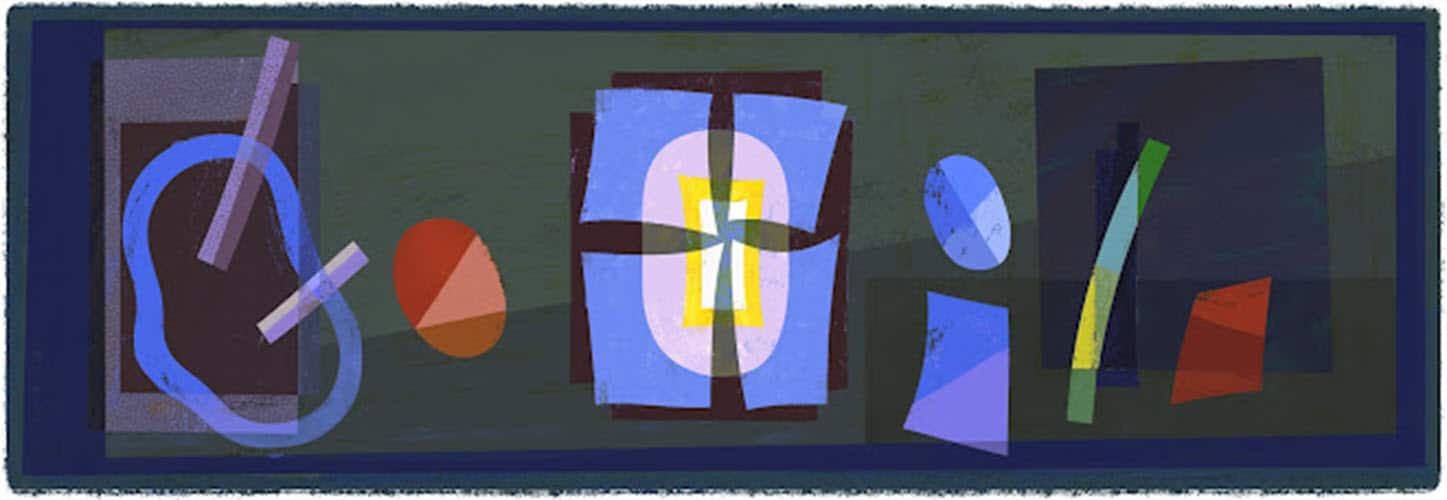Discover the extraordinary legacy of Emilio Pettoruti

Image Courtesy: Google Doodle
Emilio Pettoruti (1 October 1892 – 16 October 1971) was a pioneering Argentine painter who played a pivotal role in the development of modern art in Argentina and South America. Born in Italy, Pettoruti moved to Argentina at a young age and quickly immersed himself in the country’s burgeoning art scene.
Life and Career
Emilio Pettoruti was born on 1 October 1892 in La Plata, Argentina in a prosperous middle-class Italian family. Pettoruti’s art would be influenced by the modern, geometric layout of the city, with the “silver color of changing tonalities.
He began his career as an artist with a strong inclination towards the avant-garde, experimenting with Cubism and Futurism while studying in Europe during the early 20th century. Upon returning to Argentina, he introduced these avant-garde movements to the local art scene, challenging traditional artistic norms.
Pettoruti’s work is characterized by its bold and innovative use of color, form, and abstraction. He blended European modernism with elements of Argentine culture, creating a unique style that was both cosmopolitan and distinctly Argentine. Some of his most celebrated works include “El improvisador” and “Los Musicos,” which exemplify his mastery of form and color.
Throughout his career, Emilio Pettoruti was a prominent figure in the Argentine art world, teaching at the National Academy of Fine Arts and influencing a generation of artists. His impact extended beyond his paintings, as he actively promoted the principles of modern art and the importance of artistic freedom. His legacy endures through his groundbreaking contributions to the modernist movement in Argentina and his influence on subsequent generations of Latin American artists who embraced innovation and abstraction in their work.
He passed on October 16, 1971, in Paris, France.
Painting style
Emilio Pettoruti’s painting style is characterized by its bold, innovative, and avant-garde approach, making him a pioneering figure in the realm of modern art, particularly within the Argentine and Latin American context. His style can be described as a unique fusion of European modernist influences, primarily Cubism and Futurism, with a distinctive Argentine flavor.
One of the defining features of Pettoruti’s work is his daring use of color. He employed vibrant and unconventional color palettes, often using bold, contrasting hues that heightened the visual impact of his paintings. This approach imbued his works with a sense of vitality and dynamism, which became a hallmark of his style.
Pettoruti was also known for his geometric abstraction and distortion of form. He fragmented objects and figures into angular shapes and planes, demonstrating a clear Cubist influence. This fragmentation allowed him to convey multiple perspectives within a single composition, challenging conventional notions of representation and depth.
Furthermore, he drew from Futurism, which emphasized movement and dynamism. Pettoruti’s works often exude a sense of energy and motion, whether in depictions of urban life, portraits, or still lifes.
Notably, Pettoruti’s art frequently incorporated elements of Argentine culture, such as tango dancers, gauchos, and folkloric motifs, further distinguishing his style and providing a unique Latin American context to his modernist approach.
In summary, Emilio Pettoruti’s painting style is a captivating blend of Cubism and Futurism infused with a distinctly Argentine sensibility. His mastery of color, form, and abstraction, combined with his dedication to pushing artistic boundaries, established him as a pivotal figure in the development of modern art in Argentina and Latin America. His works continue to be celebrated for their visual impact and cultural significance in the world of art.
Award and Legacy
Emilio Pettoruti’s legacy in the world of art is defined not only by his pioneering contributions to Argentine modernism but also by the profound impact he had on the broader art scene in Latin America. Although he did not receive a multitude of formal awards and accolades during his lifetime, his influence on the development of modern art in Argentina and the region cannot be overstated.
Pettoruti’s bold and innovative approach to art, characterized by his fusion of European modernism with Argentine cultural elements, left an enduring mark. His unique style, which incorporated elements of Cubism and Futurism, challenged traditional artistic norms and inspired countless artists who followed him. He played a crucial role in shaping the avant-garde art movement in Argentina, serving as a mentor to emerging talents and encouraging artistic freedom and experimentation.
Today, Emilio Pettoruti’s works are celebrated not only for their visual impact but also for their cultural and historical significance. His paintings continue to be exhibited in major art museums and galleries around the world, cementing his status as a key figure in the development of modern art in Latin America. His legacy lives on through the artists he influenced, the students he inspired, and the enduring appreciation of his pioneering contributions to the world of art.
On 1 October 2013, Google celebrated Emilio Pettoruti with a doodle.
Observer Voice is the one stop site for National, International news, Sports, Editor’s Choice, Art/culture contents, Quotes and much more. We also cover historical contents. Historical contents includes World History, Indian History, and what happened today. The website also covers Entertainment across the India and World.

